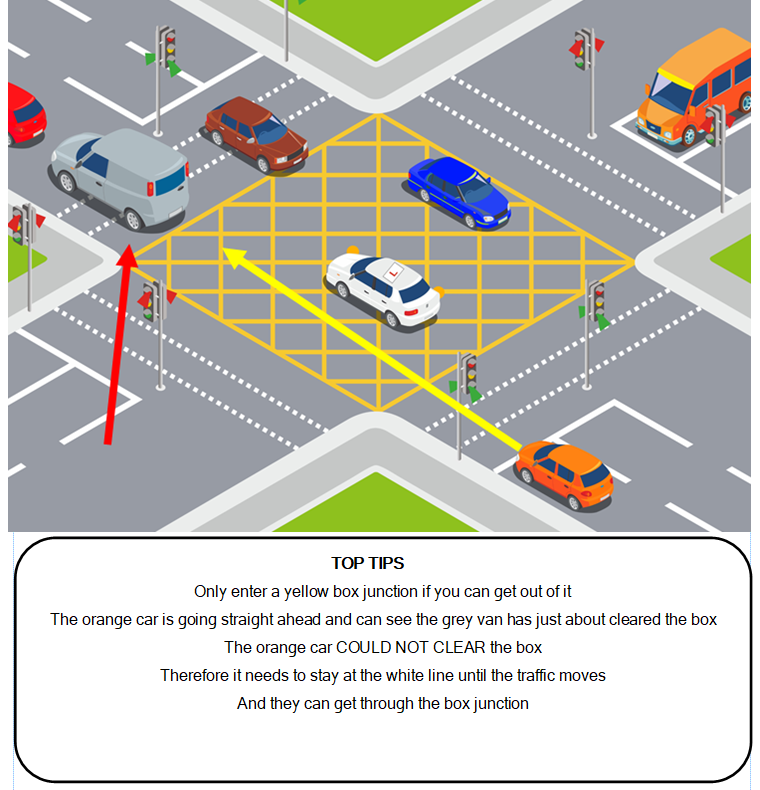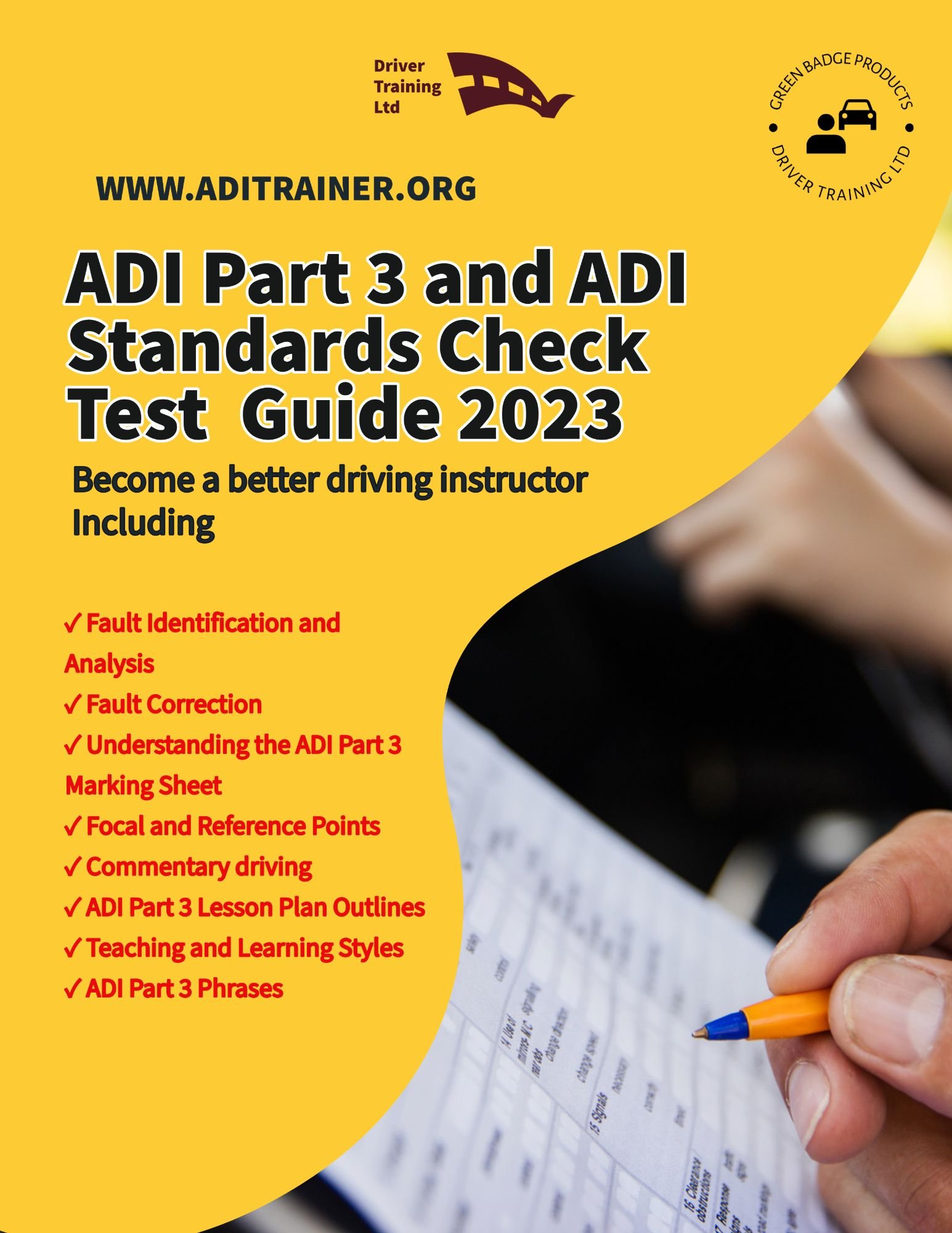ADI Part 3 Marking Sheet Lesson Planning
Lesson Planning
Looking For Driving instructor Lesson Plans?
If you are looking for driving instructor lesson plan briefing sheets we can help.
Our driving instructor lesson plan diagrams are new for 2022
Unlike other briefing folders - Ours gives you the hints and tips that you need to become a successful driving instructor
We provide full briefing folders or just the subjects you need
Manoeuvres / Crossroads / Box Junctions / Filter Lights / Roundabouts

In the ADI Part 3 Lesson Planning section, the ADI Part 3 test is essentially about
- Goal setting
- Responsibility
- Safety
- Learning
- Reflection
In fact, the DVSA is looking for three things – Is there a relevant point? Is it safe? Is learning taking place?

Lesson Planning
In other words, is there a structure in what you are doing?
Does this lesson follow on from the last one?
Are we doing this lesson because you like teaching it, or because it is actually what the pupil needs to do to carry on progressing with their driving?

Understand the subject better with our guide
Complete Guide for UK Driving Instructors - ADI Part 3 and ADI Standards Check Test Guide is professionally designed to help trainees and qualified driving instructors pass their ADI Part 3 and ADI Standards Check Test
Including ✓ Fault Identification and Analysis ✓ Fault Correction ✓ Learning and Teaching Styles ✓ Understanding the ADI Part 3 Marking Sheet ✓ Focal and Reference Points ✓ Commentary driving ✓ ADI Part 3 Lesson Plan Outlines ✓ Teaching and Learning Styles ✓ ADI Part 3 Phrases
Get yours From Our Amazon Store
Did the trainer identify the pupil’s learning goals and needs?
This doesn’t mean that the trainer has to decide the learning goals. They have to identify them.
These goals should be clarified and agreed on. If a goal is not suitable or achievable then it may need to be parked for a later date, or ‘stepping stones’ may need to be put in place as sub-goals to work towards the desired goal.
like driving a car, the goal when we start to drive is to get to the speed limit of the road and to use the highest gear permittable to save fuel and make the car drive smoothly. BUT we can’t go straight from 1st to 4th gear, we have to build up to it, and the same is true with our pupil, we have to build them up and go through a process of building them up to that skill.
Remember to be a goal it must be achievable. A roundabout, for example, is not a goal as you cannot achieve it.
Whereas ‘Judging approach speed correctly’ is.
Lane position on approach to and around roundabouts is a goal
Judging correct gaps in traffic is a goal
Pulling out and getting up to the speed of the traffic is a goal
Equally any needs of the pupil need to be identified and addressed.
Words to to keep in mind: Goals, Needs

Was the agreed lesson structure appropriate for the pupil’s experience and ability?
Were they out of their depth? Or, Were they not being challenged enough?
Adjusting the level of support, the difficulty of the situation, and the developmental task to suit the pupil is one of the core skills of an ADI.
You can always ask, “How would you like me to instruct you – talk through, prompted by means of questions or let you do it first?”
Breaking down ‘Driving’ into subsets of skills and tasks, isolating individual skills and tasks to focus on, and then transferring them into different situations to develop them and the required independence.
This is a big one! It is often a key factor in not achieving high marks and connects to Competency
3 Words to keep in mind: Agreed, appropriate experience, ability


Were the practice areas suitable?
Did the area provide what you needed?
If you were working on crossroads, do you have to drive 25 minutes to get to it, do it once and then head back?
If you were working on roundabouts, did you choose a route that had a large roundabout, followed by a mini roundabout, followed by a laned roundabout – If the pupil was advanced then that’s fine, but if not, you need to let them get used to doing one sort, before moving onto the next type.
Was it of a suitable difficulty?
Were you able to develop the lesson as learning took place?
Was the risk controllable?
Plan a route that allows you to double back, adapt and simplify.
Especially to the fact that your pupil may be having a bad day, can you have places to pull up and discuss it?
Was the lesson plan adapted, when appropriate, to help the pupil work towards their learning goals?
Did you change the plan when needed?!
This is often THE most common cause of failure on the Part 3 and Standards Check. We know the date, we choose the pupil, we make the plan – and then WHATEVER happens we stick to it…
Why?
If the lesson plan is roundabouts but the pupil keeps stalling because of having the examiner in the car, alter the plan to moving off safely and under control.
Otherwise they will never learn about roundabouts, as they will be too busy worrying about stalling
Teach and respond to the needs and errors of the pupil and the situation.
Plan to change the plan! and make sure the route/area allows for this.
Your planned route should have a
Good Route - If the pupil does well and makes progress
A Medium Route - If the pupil does as expected
A Bad Route - A Shorter more relaxed route for if the nerves of the day, get the better of the pupil and they just need to keep pulling up
